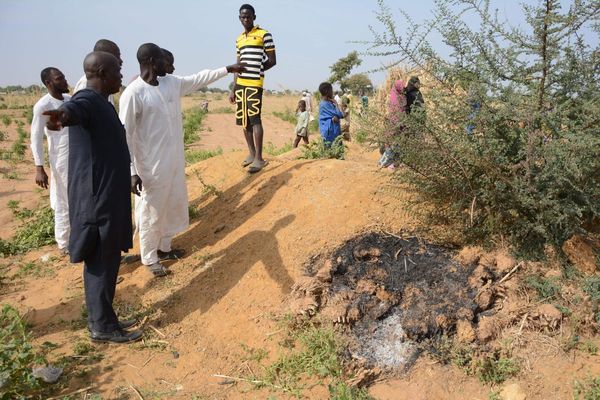Typhoon Mawar is having a far-reaching impact on Hong Kong as it brings record-breaking temperatures for the month of May and causes serious air pollution, despite bypassing the city, according to meteorologists.
The Observatory on Wednesday said the typhoon was about 520km (323 miles) east of Kaohsiung in southern Taiwan at around 4pm. "The outer subsiding air of Typhoon Mawar is bringing extremely hot weather to Guangdong," it said.
Since last Friday, the forecaster has warned residents to brace for "persistently very hot" weather brought about by the typhoon.
Temperatures soared on Wednesday, with the mercury reaching a year-high of 34.7 degrees Celsius (94.5 Fahrenheit) at the Observatory in Tsim Sha Tsui.
"Thunderstorms and heavy showers triggered by high temperatures brought more than 30mm [1.2 inches] of rainfall to North district and Tai Po," it added.
The typhoon is currently heading north-northeast towards waters east of Taiwan. It is expected to move in the direction of Okinawa, Japan's southernmost prefecture, and continue to weaken. It was earlier classified as a super typhoon.
Mawar, the Malaysian word for rose, has been reported as the most powerful storm worldwide so far this year. Yale University's school of the environment said it was the strongest tropical cyclone yet to affect the northern hemisphere in the month of May.
High temperatures in the city triggered a new heat alert for high-risk groups, such as the elderly, on Tuesday. Many weather stations, including Sha Tin, Ngong Ping and Tate's Cairn, have posted record-breaking temperatures in May.
The Environmental Protection Department has also recorded higher than normal air pollution levels since Tuesday afternoon. The air quality health index at a monitoring station in Tung Chung was at the "serious" risk level as of 4pm on Wednesday.
The department said it expected the air pollution levels to remain high until rain arrived early next week.
Leung Wing-mo, former assistant director at the Observatory, said the downward movement of air from the unusually intense typhoon had brought high temperatures to areas that were not directly in its path.
"A typhoon not only moves horizontally but also creates vertical drafts," he said. "When there is an updraft, the air has to go down somewhere else, and it happens outside a typhoon."
Leung noted that such downdrafts could span as far as hundreds of kilometres to more than a thousand depending on the strength of the storm.
"Temperatures increase when air goes down," he said. "The more potent the typhoon, the more powerful the downdraft. The downdraft is also not conducive for air pollutants to disperse, acting like an invisible lid over the city, thus worsening air quality."
The Observatory said the circulation of wind from the typhoon had contributed to the city's scorching temperatures and fine conditions.
"The subsiding air brought fine and light wind conditions … and abundant sunshine caused temperatures over inland areas to rise sharply," senior scientific officer Chan Chik-cheung said. "As typhoons in the northern hemisphere swirl in an anticlockwise direction … these winds carried the very hot air over inland areas to the city."
Mawar has wreaked havoc after first gaining strength near Guam in the western Pacific Ocean earlier this month.
Last Wednesday, it hammered the tiny United States territory, which has a population of 168,000 and is home to three military bases, bringing howling winds that reached about 225km/h (140mph) and periods of intense rainfall that measured as much as 600mm in some areas.
Mawar's winds at one point climbed to 282km/h, with gusts nearing 338km/h. The conditions were comparable to Typhoon Mangkhut, which rocked Hong Kong in 2018 and recorded peak wind speeds of 285km/h at one point.
The city maintained the No 10 warning signal, its highest-level typhoon alert, for 10 hours during Mangkhut. The typhoon, named after the Thai word for mangosteen, also shattered windows and knocked down trees, causing flooding and storm surges in coastal and riverside areas.
The Philippine government announced on Monday it would evacuate thousands of villagers, shut down schools and offices, and impose a ban on sailing as Mawar approached the country's northern provinces.
Officials warned of dangerous tidal surges, flash floods and landslides in the northernmost province of Batanes.
The Observatory said that against the backdrop of climate change, more intense tropical cyclones and heavier precipitation should be expected in future.
A warmer climate could give typhoons more energy and time to maintain their peak intensity, thus bringing more powerful storm surges and flooding, according to ex-assistant director Leung.
Environmental group Friends of the Earth called on authorities to act before extreme weather events became "an unwanted new normal under climate change".
"The government must take proactive steps to prepare the city against climate impact," the group's CEO Jeffrey Hung Oi-shing said.
"Hong Kong needs to ensure its infrastructure, economy and communities are resilient to rising temperatures, sea levels and extreme weather events, such as storms and floods."







